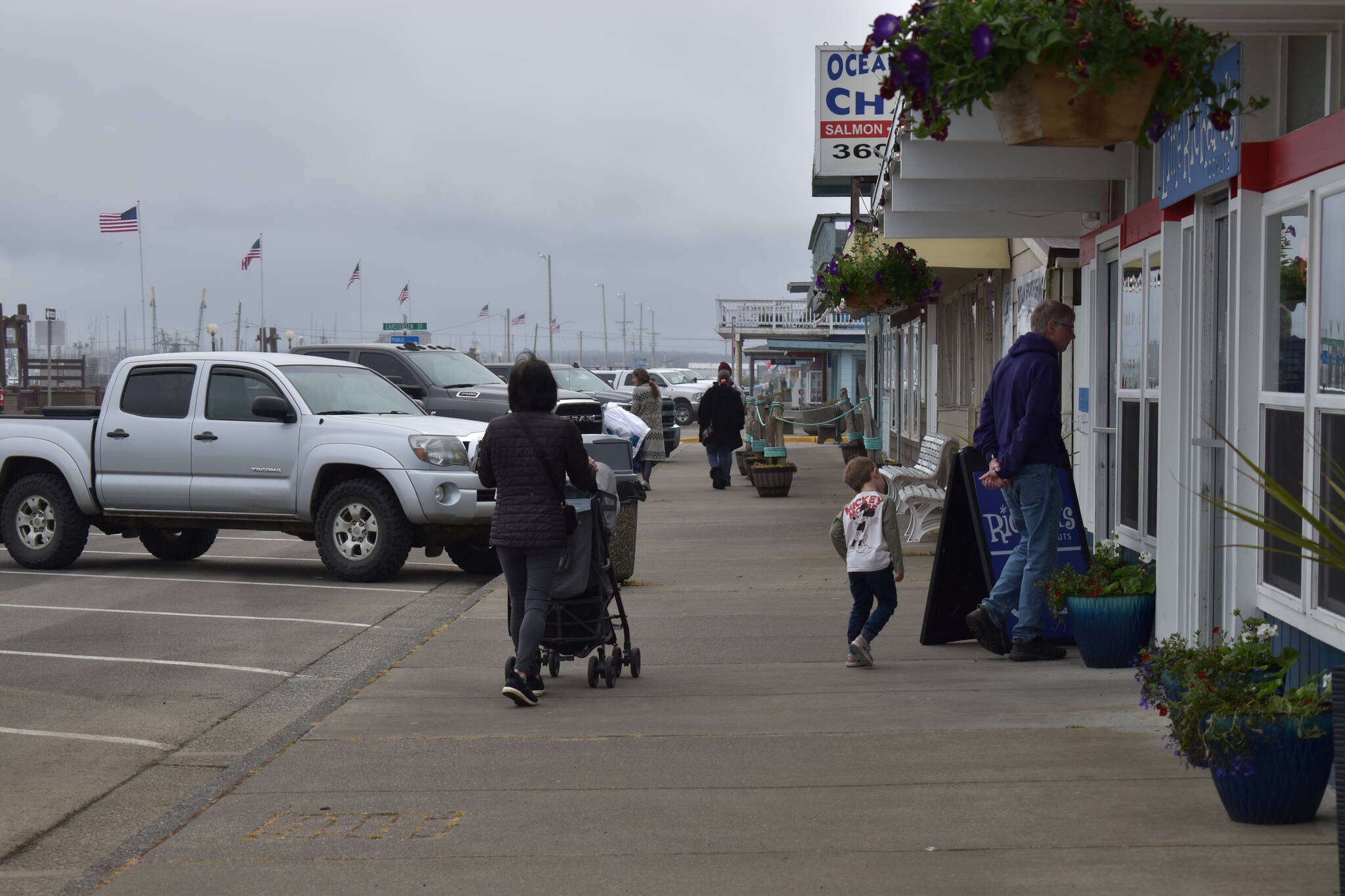As the COVID-19 pandemic altered the landscape of travel, it created new winners and losers in the tourism industry. National tourism — and even overall tourism in Washington state — has taken a hit, but Grays Harbor County has emerged from the past two years as a winner.
Anchored by the ever-increasing popularity of the beaches, the county benefited from the volatility of air travel and the uncertainty of longer destinations. Increased clam digs and the relative affordability of coastal destinations in Grays Harbor County has fueled a robust local tourism industry.
“Tourism-related businesses during the pandemic did very well. We believe this is because people wanted to stay within driving distance,” said Grays Harbor County Tourism Office Manager Kelly Peterson. “Though we really can’t say how long these great numbers will continue, we’re on track to do very well.”
Peterson was one of several speakers for this month’s business forum lunch of Greater Grays Harbor Inc. on the “State of Tourism” on Tuesday, May 24, at the Rotary Log Pavilion in Aberdeen.
Between 2020 and 2021 alone, Grays Harbor realized an additional $25.1 million in overnight stays. This does not include spending on food and beverages, recreation, fuel, and other goods and services.
Although pandemic restrictions have eased, the region is holding steady in its popularity. Thus far in 2022, Grays Harbor is already up $68,024 in overnight stays compared with the same period of 2021.
“Our coastal communities have indeed been very fortunate, because the rest of the state is down 20-30 percent from 2019, and here we’re up 40, 50, even 60 percent in some places,” said State of Washington Tourism Board President and keynote speaker Andi Day.
According to data from the State of Washington Tourism, total visitor spending statewide in 2021 was $17.7 billion, or 18 percent below 2019 numbers. In Grays Harbor County, it was $349.6 million, or 41.4 percent more than 2019.
Day largely attributes the success of the beaches over the past few years to a “right place at the right time” phenomenon, as well as years of hard work marketing to Seattleites and other residents of the Interstate 5 corridor.
King and Pierce County are the top two markets for travelers to Grays Harbor County.
But courting visitors from nearby metropolitan areas during the pandemic did not come without controversy. According to Diane Solem, General Manager of the Ocean Shores Convention Center, encouraging nonlocal visitors to come to Ocean Shores is a delicate situation that may require a change in perspective even after the height of the pandemic.
“We need to reinvent the way we look at tourism,” said Solem. “Just wanting us to bring in more people every month until the end of the time isn’t sustainable, and it isn’t the right approach with the environment.”
While tourism can negatively impact communities, it also has massive economic implications beyond industries directly related to tourism. Data from the State of Washington Tourism shows that in 2021, Grays Harbor households experienced $966 in tax savings due to tourism. This is the amount of state and local taxes that are paid by visitors on behalf of residents.
“It’s about quality over quantity; it’s the right visitors. Quite frankly, some visitors just aren’t worth the cost,” said Day. “We have to ask ourselves ‘Why are we doing this, what can tourism do for us?’”
Bringing tourism dollars into the fold without negatively impacting the local community is a balance that Westport and other South Beach destinations are starting to find.
John Shaw, Executive Director of the Westport Maritime Museum, represented the fishing community’s perspective at Tuesday’s lunch. According to Shaw, the pandemic helped the city discover what its tourism capacity was, and has readjusted their approach to attracting visitors.
“Modern tourism cities should start backing away from events, and adding energy to activities,” he said. “We discovered that we didn’t need events to get people to come to our town.”
According to Shaw, tourism in South Beach has been “very, very good,” and Westport was 70 percent over 2019 numbers for overnight stays in 2020. As the area looks to the future, Shaw is a major advocate of incorporating heritage components into tourism experiences.
In Westport, this has manifested by marketing the coastal and fishing history of the city as one that visitors can immerse themselves in.
“We’re a fishing town, we’re a tourism town, but we’re really a fishing town,” he said.
This is an approach supported by Day, who believes in the strength of tourism to be a powerful social driver that bridges the urban-rural divide by promoting and preserving local heritage and traditions.
“We need tourism to drive the economy and improve our quality of life, because that’s what really matters,” she said. “If we integrate with those industries we have, then not only are we creating an attractive tourism product, but also supporting those other industries.”
The next Greater Grays Harbor business forum lunch will be held on Tuesday, June 28, at the Rotary Log Pavilion. It will include an annual presentation of the Economic Vitality Index (EVI) and State of Grays Harbor event.



